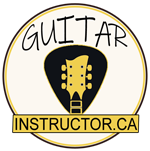
[ad_1]
Building a Strong Foundation: Beginner Guitar Practice Drills
Learning to play the guitar can be a challenging yet rewarding experience. As a beginner, it’s important to focus on building a strong foundation through consistent practice and the development of essential skills. In this article, we will explore some beginner guitar practice drills that will help you strengthen your fundamentals and set the stage for future growth as a guitarist.
Setting the Stage: Mindset and Preparation
Before diving into specific practice drills, it’s important to cultivate the right mindset and establish a solid practice routine. As a beginner, it’s normal to feel overwhelmed by the sheer amount of information and techniques to learn. However, by approaching practice with patience, consistency, and a positive attitude, you can make significant progress over time.
Begin by setting aside dedicated practice time each day, even if it’s just 15-20 minutes. Consistency is key, and regular practice will help you build muscle memory and develop a strong foundation. Additionally, make sure to create a comfortable practice environment with minimal distractions. This could involve finding a quiet space, using a comfortable chair, and ensuring good lighting.
Finally, it’s important to set clear goals for your practice sessions. Whether you want to master a specific chord progression or improve your picking technique, having specific objectives will help you stay focused and motivated during practice.
Essential Skills: Chords, Strumming, and Fingerpicking
As a beginner guitarist, there are several fundamental skills that you’ll need to develop in order to build a strong foundation. These include learning and practicing chord shapes, improving your strumming technique, and developing fingerpicking skills. Below are some beginner practice drills to help you master these essential skills.
HTML Heading 2: Chord Shape Drills
One of the first steps in learning to play the guitar is mastering basic chord shapes. Practice the following chords: G, C, D, and E minor. Spend time transitioning between these chords smoothly and accurately. Use a metronome to help you stay in time and gradually increase the tempo as you improve.
HTML Heading 2: Strumming Technique Drills
Strumming is a crucial aspect of playing the guitar, and a strong strumming technique will enable you to create rhythm and drive the music forward. Begin by practicing simple downstrokes on open strings, focusing on maintaining a consistent rhythm and clean sound. Gradually introduce upstrokes and work on incorporating different strumming patterns into your practice routine.
HTML Heading 2: Fingerpicking Drills
Fingerpicking is another valuable skill for guitarists, and it adds a unique dimension to your playing. Start by practicing simple fingerpicking patterns on individual strings, focusing on precision and control. Gradually work your way up to more complex patterns and incorporate them into your repertoire of practice drills.
Building Strength and Dexterity: Daily Exercises
In addition to practicing specific skills such as chords, strumming, and fingerpicking, it’s important to dedicate time to building strength and dexterity in your hands and fingers. Below are some daily exercises that will help you develop the physical abilities necessary to become a proficient guitarist.
HTML Heading 2: Finger Strength and Independence
Begin by practicing simple finger exercises such as finger stretches and independent finger movements. These exercises will help you develop finger strength and dexterity, enabling you to navigate the fretboard more easily and play complex chord shapes and scales.
HTML Heading 2: Hand and Wrist Mobility
Maintaining flexibility and mobility in your hands and wrists is essential for playing the guitar. Practice gentle stretches and exercises to keep your hands and wrists limber, reducing the risk of tension and injury during long practice sessions.
HTML Heading 2: Coordination and Speed
As you progress, it’s important to work on improving your coordination and speed. Practice exercises that involve quick finger movements and string skipping to challenge your dexterity and precision. Don’t be discouraged if these exercises feel difficult at first – with consistent practice, you’ll see significant improvement over time.
Putting it All Together: Song Practice
While it’s important to focus on specific drills and exercises to build foundational skills, it’s equally important to apply these skills in a real musical context. Choose a few simple songs to work on that incorporate the skills you’ve been practicing, such as chord changes, strumming patterns, and fingerpicking. Start by practicing the songs at a slower tempo and gradually increase the speed as you become more comfortable.
HTML Heading 2: Conclusion
Building a strong foundation as a beginner guitarist requires dedication, patience, and consistent practice. By focusing on essential skills such as chord shapes, strumming technique, fingerpicking, and physical dexterity, you can set the stage for future growth and development as a musician. With a positive mindset and a clear practice routine, you’ll be well on your way to becoming a proficient and confident guitarist. Remember to approach practice with patience and enjoy the journey of learning and improving your skills.
[ad_2]
